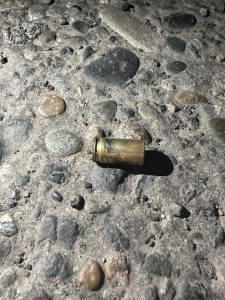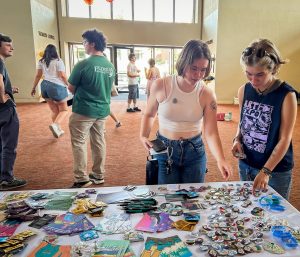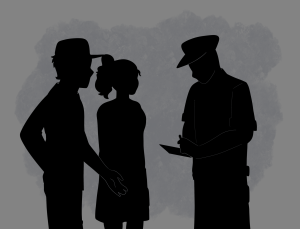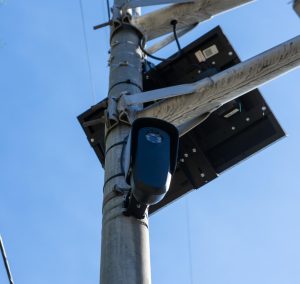“Agents of injustice”: Whitman community contemplates policing, jury selection and central arguments in trial of Derek Chauvin
April 15, 2021
As the trial of Derek Chauvin, the Minneapolis police officer who killed George Floyd, continues amid outcry over the recent police killing of Daunte Wright in the same city, the Whitman community reflects on the trial’s impact on policing and the anti-racism movement.
Chauvin faces charges of second-degree manslaughter, second-degree murder and third-degree murder. During the first two weeks, the jury heard opening statements from the prosecution and defense, as well as testimonies from witnesses. The jury also saw body camera footage and other videos, heard from police on use-of-force protocols, and heard from a series of medical experts.
Jury Selection
The trial began with an extensive two-week jury selection process to seat fourteen jurors, two of which are alternates. The call to jury duty included a fourteen-page questionnaire which asked potential jurors about their views on race and policing, as well as on topics that are generally used to gauge political ideology, including the type of media that a potential juror consumes.
Jurors were asked to record their opinion on statements like “Blacks and other minorities do not receive equal treatment as whites in the criminal justice system,” and “Because law enforcement officers have such dangerous jobs, it is not right to second guess decisions they make while on duty,” and “I do not trust the police.”
The questionnaire also asked, in a city where police use force against Black people is seven times the rate than against white people, whether potential jurors agreed or disagreed with the statement “Minneapolis police officers are more likely to respond with force when confronting Black suspects than with dealing with white suspects.”
While the jurors remain anonymous due to the publicity of the case, The New York Times reports that there are three Black men, one Black woman, two women who self-identified as multiracial, two white men and four white women. Jurors are both urban and suburban and ages range from 20s to 60s. The jury is slightly more racially diverse than the population of Minneapolis.
Central Arguments
“You can believe your eyes, that it’s homicide,” Jerry W. Blackwell, one of the prosecutors, told jurors in an opening statement. “It’s murder.”
The objective for the defense, however, is to introduce doubt over whether other factors complicate the story told by the video of Floyd’s death.
“[The case] is clearly more than about 9 minutes and 29 seconds,” Eric J. Nelson, Chauvin’s defense lawyer, told jurors.
The defense has argued that Chauvin was following protocol, that the crowd could have increased pressure on Chauvin, and that Floyd’s death may have been due to a drug overdose (which has since been refuted by multiple medical experts brought forward by the prosecution).
Impact
Junior Aliyah Fard is the Vice President of the Black Student Union (BSU) at Whitman. Fard says she has not and will not track the trial closely.
“For an entire summer up until now, Black people have watched ourselves die multiple deaths in multiple different ways, never receiving any type of justice. The emotional impact is self-explanatory,” she said, “which is why I have chosen to separate myself from the trial, besides looking at very brief and non-detailed summaries of what happened day to day. I am sure that many BSU members have chosen this same path.”
Associate Professor of Philosophy Tom Davis, whose Radical Thoughtlessness class is working to apply conceptual language to understand the video of George Floyd’s death, frames the trial in terms of two definitions of policing. The first, “serve and protect,” is in direct conflict with the other, Chauvin’s idea of “maintaining law and order.”
Davis argues that Chauvin’s demeanor is largely unaffected by the cameras pointed at him because, “He is acting the whole time in complete conformity with his understanding of his job of maintaining law and order, which actually means having to constantly restore order in the face of the disorder native to being ‘out on the street.’”
The question about the purpose and place of policing also has, according to Director of Race and Ethnic Studies Zahi Zalloua, implications for the United States’ global image.
“The question becomes what does it mean to serve and protect when what you’re protecting is a racist state and anti-Blackness as a category?” Zalloua said. “I think now to be able to see the police — and racialized minorities have had that perception for a long time — to see the police not as an agent of justice, but as agents of injustice is devastating for the legitimacy of any civil society.”
Zalloua also spoke about how in predominantly white, liberal spaces like Whitman’s campus, “There’s a kind of enjoyment in thinking of themselves as anti-racist.”
“The desire to externalize everything that is bad with anti-Blackness in one bad police officer is problematic,” he said. “It is deeply problematic because this white liberal America has been so deeply complicit in the production of anti-Blackness. So the trial is very important, but it also risks obfuscating systemic problems.”
The prosecution rested their case on Tuesday, April 13. Judge Peter Cahill told jurors that the defense will likely wrap up by the end of the week, and both sides are expected to give closing arguments on Monday, April 19. At that point, the jury, which can take as long as it needs to deliver a verdict, will begin deliberating.






